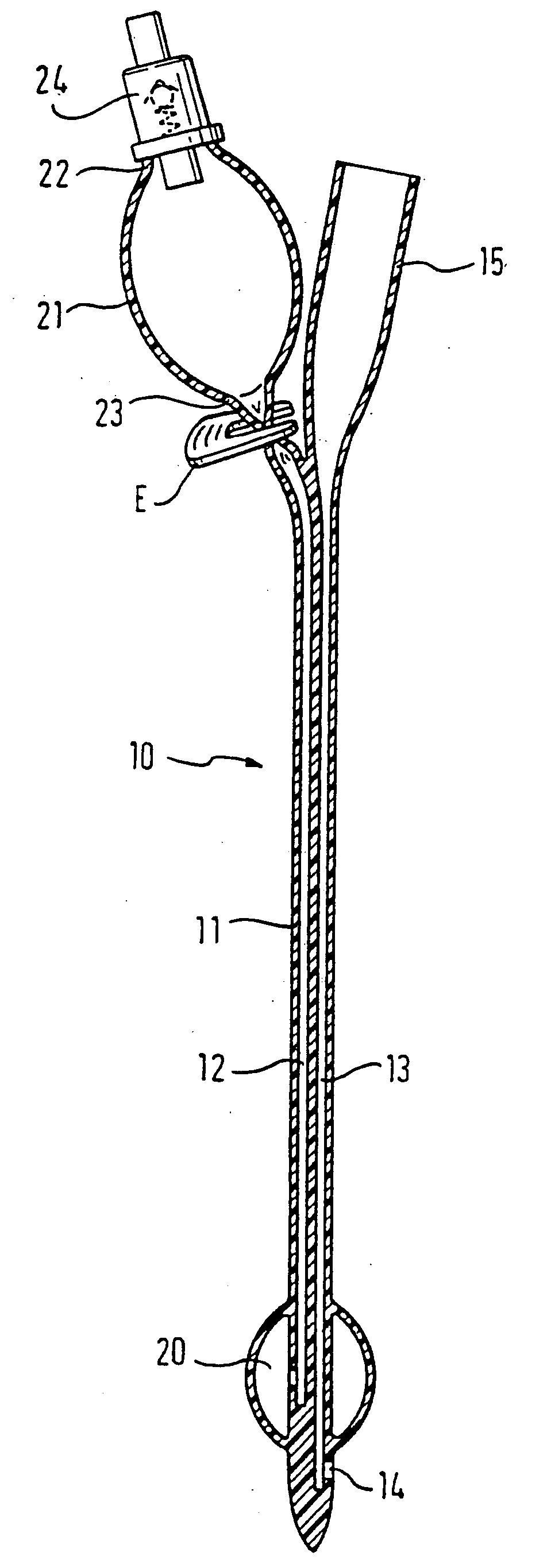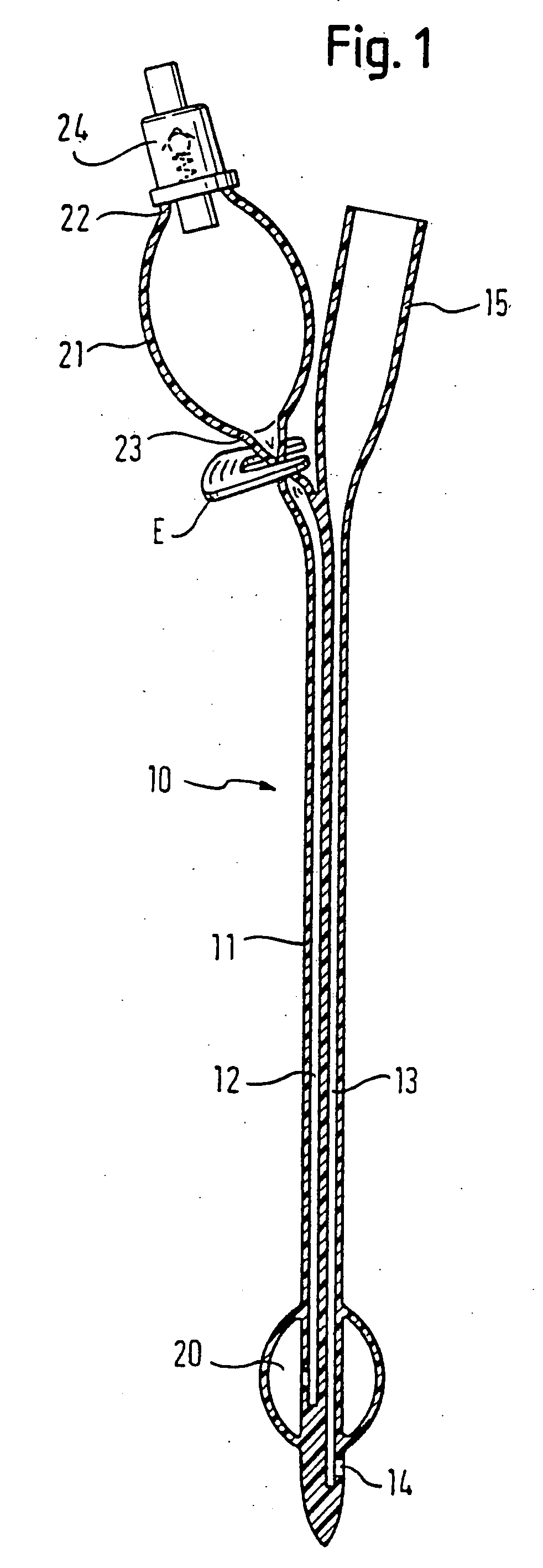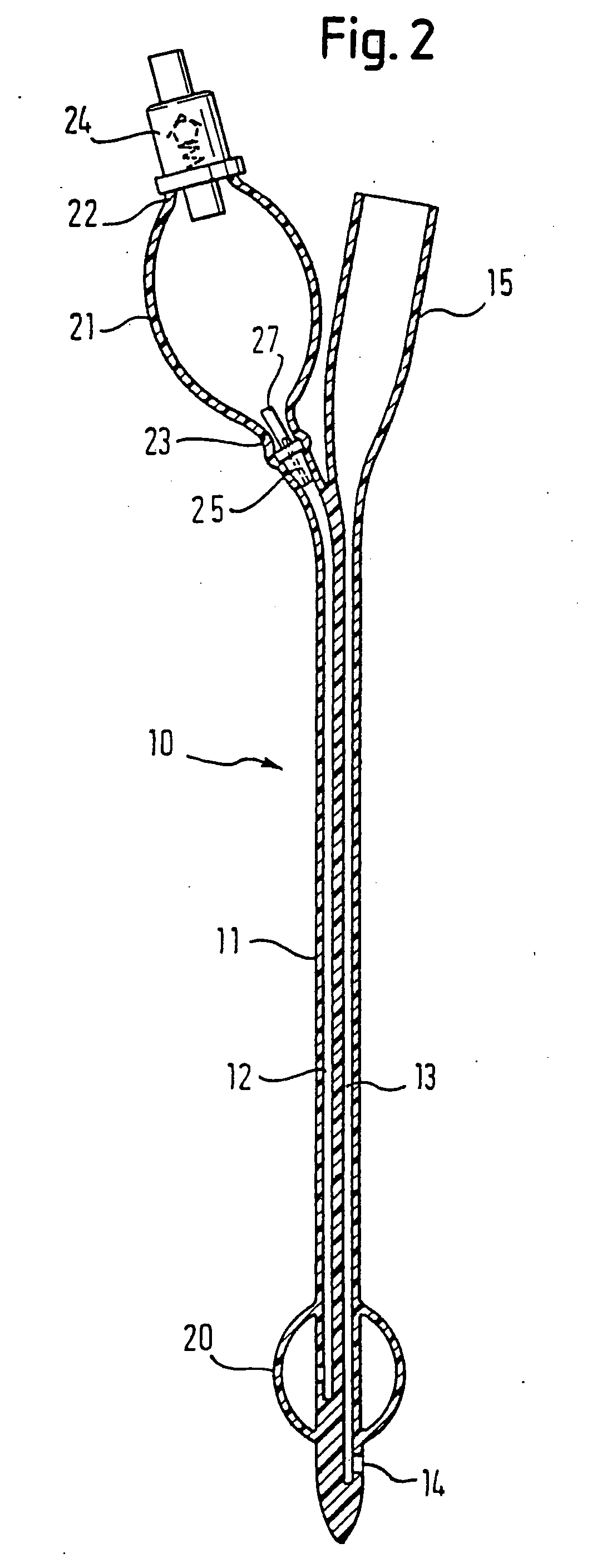Medical device with elastomeric bulb
a technology of elastomeric bulbs and medical devices, which is applied in the direction of balloon catheters, catheters, stents, etc., can solve the problems of reducing the resistance to escape water, affecting the flow rate of fluid, so as to improve the flow rate and facilitate the arrangement of the sleeves. , the effect of reducing the rate of fluid loss
- Summary
- Abstract
- Description
- Claims
- Application Information
AI Technical Summary
Benefits of technology
Problems solved by technology
Method used
Image
Examples
Embodiment Construction
[0043]FIG. 1 shows a known pre-filled Foley catheter. The catheter 10 comprises a shaft 11 of latex rubber which defines a balloon inflation lumen 12 and a drainage lumen 13. The drainage lumen 13 extends from a distal drainage port 14 to a drainage bag coupling element 15 at the proximal end of the catheter. The inflation lumen 12 connects a chamber 20 at the distal end of the catheter, but proximal of the drainage port 14, with a reservoir bulb 21 at the proximal end of the device. In FIG. 1, both of the balloon 20 and bulb 21 are shown inflated, for the sake of clarity, but those skilled in the art will appreciate that the sterile water within the bulb 21 is not sufficient simultaneously to fill both the bulb and the balloon. The reality is that, when the bulb 21 is full, the balloon 20 is not yet inflated and, when the balloon 20 is fully inflated, the bulb 21 is deflated.
[0044] The bulb 21 has a proximal end 22 and a distal end 23. At the proximal end 22 is a conventional one-...
PUM
| Property | Measurement | Unit |
|---|---|---|
| inner diameter | aaaaa | aaaaa |
| diameter | aaaaa | aaaaa |
| diameter | aaaaa | aaaaa |
Abstract
Description
Claims
Application Information
 Login to View More
Login to View More - R&D
- Intellectual Property
- Life Sciences
- Materials
- Tech Scout
- Unparalleled Data Quality
- Higher Quality Content
- 60% Fewer Hallucinations
Browse by: Latest US Patents, China's latest patents, Technical Efficacy Thesaurus, Application Domain, Technology Topic, Popular Technical Reports.
© 2025 PatSnap. All rights reserved.Legal|Privacy policy|Modern Slavery Act Transparency Statement|Sitemap|About US| Contact US: help@patsnap.com



